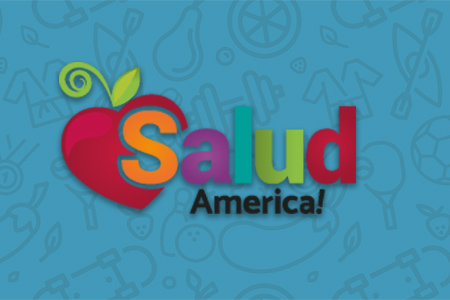
Share On Social!
Editor’s note: This editorial by Dr. Amelie G. Ramirez was part of a MomsRising blog carnival on Oct. 30, 2013.

Food marketing to kids is a huge piece of the U.S. obesity puzzle.
Latino kids are a prime target for food marketers, largely because of their large population numbers—they comprise 22% of all U.S. youth and will rise to 30% by 2025.
But there are other reasons they are such a target.
Latino kids have higher rates of exposure to media—TV, computers, video games, etc.—in a typical day than do their white peers, about 13 hours compared with 8.36 hours. And Latino teens have been called “superconsumers” of soda, candy, and snacks spending 4% more than non-Latino teens.
The result?
About 84% of kid-targeted food and drinks ads on Spanish-language TV promote foods in the lowest nutritional category, versus 74% on English channels, one study found. Another study found that Latino neighborhoods have nine times more outdoor ads for unhealthy foods and drinks than White neighborhoods.
How do marketers target Latino kids with food ads?
Marketers consider relevant ethnic-specific media channels, social institutions (i.e., churches) and shopping patterns.
They use Latino-relevant ethnic symbols, linguistic styles, music, athletes and celebrities to link cultural values with certain foods.
Spanish-language websites also target Latina moms, who they view as the decision-makers for food products bought for kids. Fast-food companies have developed ethnically targeted web content, such as McDonald’s MeEncanta.com.
What can be done to limit unhealthy marketing to Latino kids?
Food and beverage industry self-regulation of marketing to youths is mixed, and government regulation of food marketing to kids is limited.
Some efforts are going on. For example, the Walt Disney Company in 2012 announced a plan to phase junk food advertising out of its TV and radio programming targeted at kids.
Additional industry self-regulation and governmental regulation—stimulated by community awareness and action—can help limit the marketing of unhealthy foods and beverages to Latino children.
Local actions, according to one study, include:
- In food retail markets, limit amount of store window space dedicated to signs, and/or require “healthy check-out aisles.”
- In toy and sporting-goods stores where food isn’t the main product, prohibit food sales.
- In restaurants, enact local menu labeling laws and restrict placement of fast-food restaurants near schools or the density of fast food.
- In schools, can prohibit the sale and advertising of unhealthy foods on campus, including fundraisers.
- In communities, can tailor vending contracts to limit the sale and marketing of unhealthy foods at parks, pools, etc.
Marketers’ target has been set on Latino kids. Now it’s up to individuals and groups to make sure our children see healthy food options, rather than unhealthy ones.
Be sure to check out the research package on health marketing and Latino kids by Salud America! The RWJF Research Network to Prevent Obesity Among Latino Children. There you will find a fascinating animated video and colorful infographic that makes it easy to understand the issue and how it related to Latino kids.
Explore More:
Maternal & Child HealthBy The Numbers
20.7
percent
of Latino kids have obesity (compared to 11.7% of white kids)



